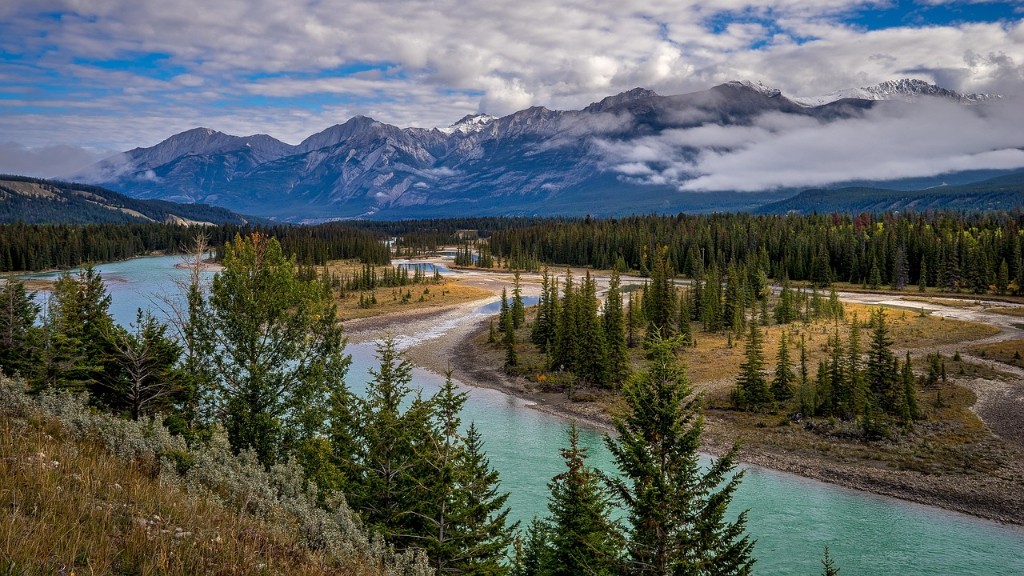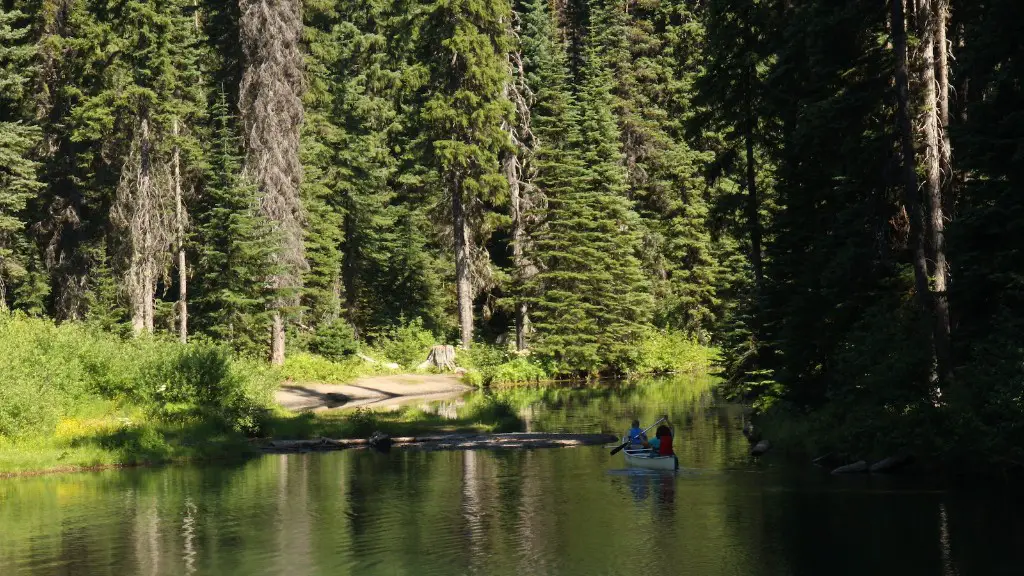What Are the 10 States that Border the Mississippi River?
The Mississippi River is one of the most iconic and recognizable rivers in the United States. It is also the largest river in North America, stretching more than 2,300 miles from the northern reaches of Minnesota, south to the Gulf of Mexico. In addition to being a beautiful sight to behold, it’s also incredibly important to the many communities that call the river their home. Spanning 10 state borders, the Mississippi has provided resources, sustenance, and employment to its many inhabitants over the centuries.
From its beginning in Lake Itaska in Minnesota, the river snakes its way south, forming part of the borders of Wisconsin, Iowa, and Illinois in its route. Further south, the mighty river forms all or part of the boundaries of Missouri, Arkansas, Tennessee, Kentucky, Mississippi, and finally Louisiana near its end.
These 10 states are all part of the Mississippi River watershed, meaning that rain that falls in the watershed ultimately drains to the Mississippi River. This has important implications for agriculture, recreation, and development in the region since the river is connected to each state’s economy, infrastructure, and overall livelihoods.
In terms of development, it has been integral to the economic activity of many of the states that border it. The river ports and transportation infrastructure along the river have made it an integral shipping route throughout history, and still today industries rely on the river to get goods to their markets. Agricultural production depends on the river’s ability to transport both water and soil, and communities that lie along the Mississippi benefit from the numerous recreational activities the river allows such as fishing, kayaking, and river cruises.
The river has been an ever-present figure in the socio-economic relationships of the 10 border states. From its beginnings in Minnesota, to its mouth in Louisiana, the mighty Mississippi has left an indelible mark on the region. It has energized commerce, inspired creativity, and provided irrigation to millions of farms and homes along its length. Even those who do not live directly along the river’s shores will find its presence deeply felt in their lives.
The River’s Cultural and Historical Significance
The Mississippi River has an unmatched legacy in American history and culture. Generations of people have lived and worked along its banks and experienced the river as an ever-present source of life. It is a symbol of adventure and exploration that has been featured prominently in many folk songs and novels, and is still considered a gateway to the frontier for many people.
The river was the setting for some of the most important moments in U.S. history, including the Battle of Vicksburg and the 1967 Civil Rights Movement in Memphis. It was also the backdrop for a number of civil engineering projects, such as the Great River Road project in the 1930s and the Crescent City Connection bridge that opened in the 1950s.
These iconic moments are part of the river’s cultural and historical significance, and the communities along its length strive to uphold and keep alive these traditions. It is a reminder of the city’s and states’ hard work and dedication to preserve the mighty Mississippi River and the beauty and abundance it brings.
Environmental Concerns Affecting the Mississippi River
Unfortunately, the Mississippi River is not without its environmental concerns. In the last few decades, there have been worries that the river ecosystems are being irreparably damaged due to increased water pollution and climate change. This has led to high levels of harmful chemicals in the river, degradation of habitat and migration patterns, and a decrease in the biodiversity of species living in the river.
To address these issues, the states that border the river have worked together to implement better regulations for wastewater management and industrial runoff. In addition, a number of non-profits and organizations have worked to restore natural habitats and reintroduce native species. Conservation efforts have had success in some areas, however, these efforts are often costly and require a lot of resources.
The 10 states that border the Mississippi River have a responsibility to ensure that its waters are kept clean and healthy for future generations. They must continue to work together with the scientific community and the government to find better ways to reduce pollution and the effects of climate change.
The Impact of the River in Daily Life
The Mississippi River plays an important role in the lives of the people in the 10 states that border it. The river provides an important source of recreation, transportation, and sustenance to communities, and its unique ecosystems provide habitats for diverse species. It is also a source of inspiration and motivation to its many inhabitants.
The river is an integral part of life in the 10 states, a part of the fabric of everyday existence. From bustling cities to rural farmlands, the Mississippi River touches people’s lives in very different ways. It is a reminder of the river’s power and magnitude, and the important role it plays in the region’s culture and economy.
No matter where one stands along the banks of the mighty Mississippi, the river’s effects are undeniable. It is a reminder of the river’s unique beauty, and a symbol of the powerful connection it has forged among the people of the 10 states.
Economic Benefits of the River
The Mississippi River has played an important role in the economic development of the region, providing transportation and resources to the many communities along its length. This has opened up new trade routes for goods, tourism, and capital investments throughout the region. In addition, the river has also provided a major source of employment, with many towns and cities relying heavily on the river for jobs such fishing, shipping, and boating.
In terms of agriculture, the river provides an important resource for the 10 states that border it. The river supplies fresh water and minerals to the land, promoting healthy soil and increased yields in crop production. This has been especially important in areas of the region that have been hit hard by drought or climate change.
The Mississippi also serves as a vital source of hydroelectric power. A number of dams have been built along the river in order to produce electricity, often providing more affordable and renewable forms of energy to its many inhabitants.
The Significance to Tourism
The Mississippi River serves as an important part of the tourism industry in the 10 states that border it. The river’s unique waterways, spectacular landscapes, and cultural significance attract visitors from all around the world. In addition, many towns and cities along the river’s length provide an array of activities such as fishing, boating, sightseeing, and relaxing make for exciting trips.
The cities along the Mississippi waterfronts have long been considered some of the top tourist destinations in the United States. For example, the Twin Cities of Minneapolis and St. Paul, in Minnesota, draw in millions of visitors each year due to their blend of natural and urban attractions.
In addition to providing an important source of employment and commerce, the river itself has been a major factor in drawing people to the region. From impressive river cruises to unique cuisine, the Mississippi River is an integral part of the tourism industry in the 10 states that border it.
Conclusion on the Mississippi River’s Impact
The Mississippi River is one of the most iconic and beloved rivers in the United States. Spanning 10 state borders, it has been an influential figure in American history, culture, and economy for centuries. It serves as an important resource for communities throughout its length, providing water and soil for agriculture, transportation for goods, and supplies of freshwater for industry and commerce.
The river is also of great significance to the 10 states that border it. Its environment and ecosystems provide essential habitats for diverse species, while its cultural influence and historical significance link the 10 states together in a unique way. People living in the region have come to rely on its power and bounty, and have worked hard to keep its waters clean and its rivers safe. The Mississippi River is a truly remarkable part of the American landscape, and its impact will continue to be felt for many years to come.





